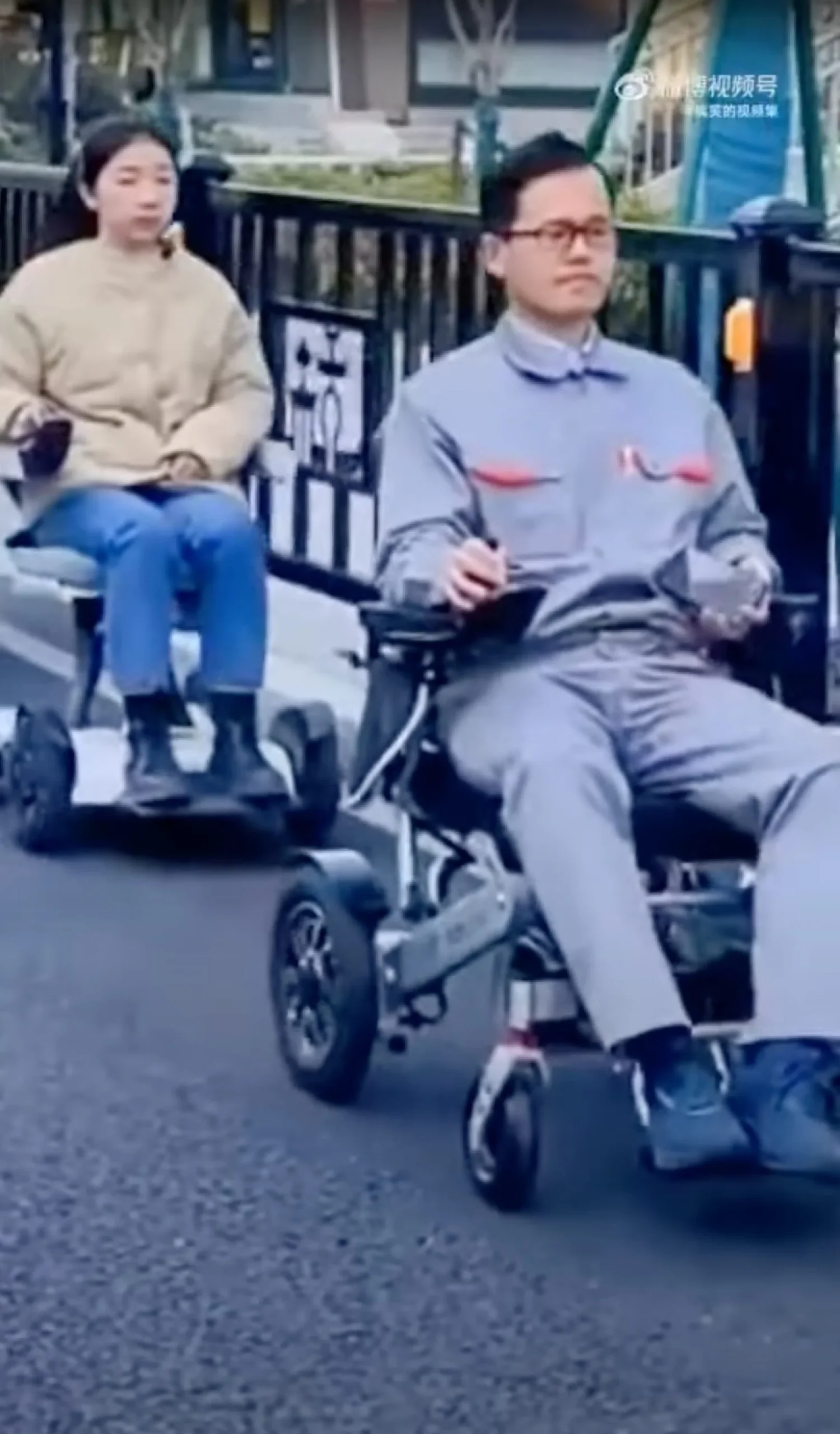In a remarkable turn of events, a number of young people in Guangzhou, a bustling city in southern China, have adopted an unconventional approach to contesting stricter regulations surrounding electric bikes (e-bikes). In an apparent act of protest, they have started to use electric wheelchairs for their daily commute. Videos depicting these young commuters have quickly spread across social media platforms, instigating a broad spectrum of reactions and triggering intense debates about the nature of this innovative response.
The controversy stems from the fact that electric wheelchairs are, by design, a form of transport intended to aid those with mobility impairments. Their utilization by physically able individuals is seen by some as a thoughtless act of appropriation. “I should find this funny, young, able-bodied people using wheelchairs designed for the disabled or sick,” one social media user commented, “But it makes me more angry and sad. Is it the people or our society that is unwell?”
At the heart of the issue is a recent proposal by Guangzhou city officials to implement more stringent rules on the usage of e-bikes. This is a measure that the city authorities believe is necessary due to the unprecedented surge in e-bike numbers since their legalization in 2021. According to Dingduan News, a Chinese online news source, an estimated five million e-bikes are now in circulation within Guangzhou, a city with a population of 18.7 million. This means that approximately one in four residents owns and uses an e-bike.
E-bikes have become a crucial mode of transport, especially for the thousands of delivery riders in the city. However, alongside their increasing prevalence, the instances of traffic violations related to e-bike use have also risen sharply. As per the Guangzhou traffic police records, over one million such cases were reported in 2021, and that number rose to 1.6 million the following year.
The proposed regulatory measures, still under public consultation, aim to restrict the use of e-bikes during peak hours or entirely in certain areas, and ban any form of modifications, including the addition of rear-view mirrors. Yang, a resident of the city, argues that the problem is more about the city’s outdated urban design than the e-bikes themselves. With less road space available, conflicts between different modes of transportation become inevitable.
However, not everyone is convinced that electric wheelchairs offer a realistic alternative. A local medical equipment shop owner, Liao, argues that they are slower than regular bikes and difficult to take on public transportation like buses and trains. Moreover, the fastest electric wheelchair available online can only reach a speed of 6km/h.
Despite these drawbacks, electric wheelchairs are currently exempt from the traffic regulations that apply to motorized and non-motorized vehicles. This has led to some social media users expressing support for their use, arguing that increased usage could lead to improved city accessibility for those who genuinely need wheelchairs.
Others, however, criticize the stricter e-bike regulations for triggering such a spectacle. “I can’t support these regulations,” commented one user, “People depend on e-bikes to earn their living.” Lu Chih-ying, an associate professor at Fujian University of Technology, believes the solution lies in improving urban planning rather than restricting e-bike usage. He suggests redesigning roads and designating special lanes for non-motorized vehicles as a more constructive approach.
READ MORE:
